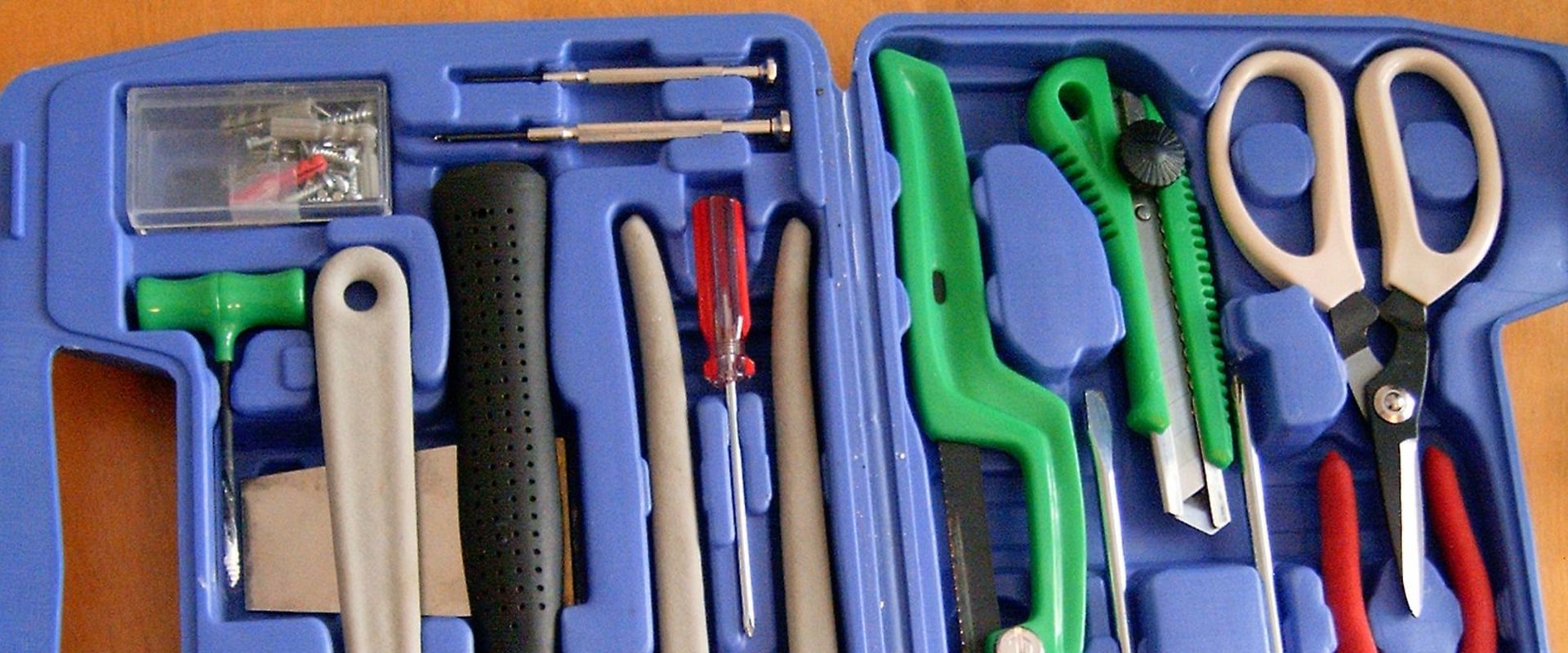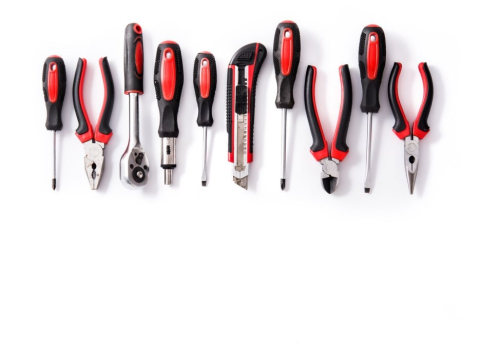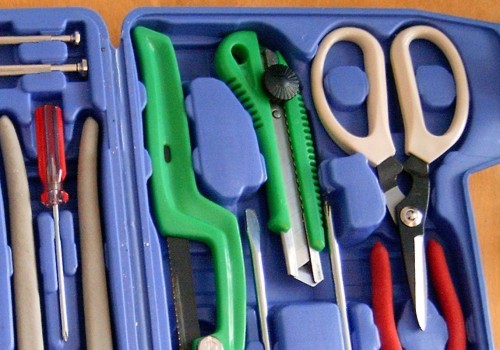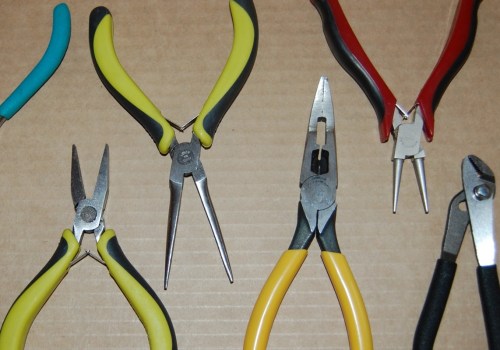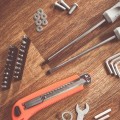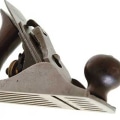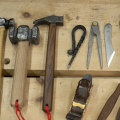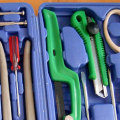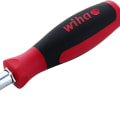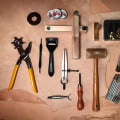A hand tool is any tool that works with the hand instead of a motor.
Hand tool
categories include wrenches, pliers, cutters, files, tapping tools, perforated or hammered tools, screwdrivers, presses, tweezers, scissors, metal saws, drills and knives. Different types of hand tools include screwdrivers, hammers, pliers and wrenches. Depending on your needs, each of them has a different use and most are not interchangeable.Knowing what hand tools are and their purpose is essential for anyone who wants to build or repair just about anything. The humble screwdriver, one of the inventions that saves humanity the most time and labor, has made the life of almost every living human being a little better. Screws hold almost anything better than a nail, so it makes sense that the screwdriver is the cornerstone of civilization. While there are many varieties, there are three main types of screwdrivers.
In an era of technological magic, we now have access to screwdrivers with interchangeable tips. The best of these multi-bit units offer ratchet action, allow drill bits to be stored in the tool body, and are even magnetized. The first tools that man created were a kind of hammer, and although technology has made them lighter and stronger, there aren't many technological advances available for something heavy that is used to hit other things. Still, we have different varieties of hammers, and the task you perform will determine the tool you choose.
Most hammers have a front and a back part, including the side where you hit your nails and the side that removes your nails. The double-ended claw on the back of almost every hammer you've ever seen is vital, as it allows you to remove a wandering nail without damaging the surface it's nailed to. While every experienced hammer user has their unique techniques, everyone uses the claw. Hammers also come in many sizes for large or small projects.
There are hammers explicitly designed for roofing, hammers with shock-absorbing grips, and dead blow hammers (for use, for example, with chisels). There are even wooden hammers specifically designed to work with chocolate. This deceptively simple tool is a wonder in and of itself. Almost everyone has used a pair of pliers and, among those people, few would argue against the utility of the tool.
Simply put, pliers are created when two pieces of metal, each of which acts as a lever, are joined together at a fulcrum. This multiplies the pressure you can exert with your hand, allowing you to do things your bare hands could never do. There are pliers for cutting, crimping, for use on brake springs and even for specific tasks inside an aquarium. Some (called channel locks) are adjustable and others have special tweezers to, for example, remove nails or, in the case of sharp-pointed pliers, enter tight spaces.
Because it's a simple tool, the humble pair of pliers has grown into many, “many species”. Perhaps the most important tool for building anything, the measuring tape is the one used to follow the ancient wisdom of “Measure twice, cut once”. Tapes come in many sizes, from a length of 12 inches (30.48 cm) to more than 30 feet (9.14 meters), and special measuring tapes can be hundreds of feet long. Like pliers, wrenches provide torque and allow the user to turn (or prevent them from turning) a bolt or nut.
Unlike pliers, wrenches come in specific sizes. While the same pair of pliers can turn a half-inch nut and a quarter-inch bolt, the wrenches are not interchangeable. The advantage is that wrenches (especially box end wrenches) can cover more surface area of the nut or bolt, providing more torque than pliers. Another indispensable hand tool on the list is the multi-purpose knife, also called a box knife or box blade.
It consists of a metal body with a retractable razor blade inside. Any self-respecting carpenter has probably told 100 different people that you can never have enough tweezers. It's not surprising that there are seemingly infinite varieties of tweezers, and while a C-clamp is one of those varieties, it also comes in many different shapes and sizes. The head of a hammer allows you to nail nails to build, hang wall decorations or assemble office furniture.
Meanwhile, the end of the claw can be used to remove nails and open boxes. While some companies may use specialized hammers for more complex tasks, the claw hammer is a reliable resource at the top of any list of hand tools. An adjustable wrench is useful for assembling furniture or performing basic office plumbing repairs. There are many common situations where you may need a wrench to tighten or loosen bolts, nuts, and a variety of fasteners because of the jaw's ability to loosen or tighten fasteners of different sizes.
Hexagonal wrenches or Allen wrenches are commonly used to fix and assemble furniture, upgrade electronics, and adjust power tools. Unlike a wrench used for gripping, a hexagonal wrench fits in a hexagonal-shaped hole often found in the head of a screw or other hardware. A folding hexagonal wrench set can fit half a dozen sizes or more, and folds up to fit inside a drawer, tool box, or pocket. The long-pointed, fine-pointed pliers are ideal for cutting, holding or pulling.
An extended tip helps reach tight areas where pliers with shorter noses cannot. The pliers are useful for gripping, bending and cutting. Handheld flashlights are useful during power outages, at night, or when navigating dark or poorly lit office spaces. Some flashlights have rugged, waterproof designs that work well in rainy weather or humid areas.
While a measuring tape may not be the first tool that comes to mind when making a list of hand tools, it is one of the most commonly used items. Whether you need to measure a couple of inches or many feet to set up, install, or build anything in the office, a reliable measuring tape can do the job. Screwdrivers are very important and are used to tighten screws, bolts and nuts. They come in several shapes and can also be modified depending on the size of the bolt.
Tweezers are used to hold objects together firmly and prevent them from separating or moving by applying inward. They are usually used in furniture repair or assembly work. Pliers are found almost in every home. They are used to hold objects firmly, bend other materials and remove unwanted items.
It is also used to bend or straighten wires, cut wires, remove nails, or simply hold objects firmly in one place. Pliers with needle tips and the ability to cut wire are one of the best types. They are useful both in workshops and in homes. A measuring tape is an essential tool for every craftsman or manufacturer.
They are useful for taking measurements of a room or wall. If you're in the construction industry, a measuring tape is the first thing you need. This tool is essential for almost any job that involves measuring objects. You should buy a sturdy measuring tape with a hook that moves, which will make it easier to measure when you are alone.
A 25-foot measuring tape is probably your best bet. It will be long enough for most jobs without being difficult to handle. These simple tools are often overlooked, but are necessary for just about anything that involves cutting an angle. These tools are really cheap, so there's no excuse for not having one lying around.
A speed square is a lot of different tools in one. It can be used as a miter square and a conveyor (although we also recommend having a normal conveyor handy). They're very cheap and nice to have around, even if you don't consider yourself a sizable DIYer. For things that are too big for your regular measuring tools, a laser meter is a great option.
These lasers quickly measure any distance up to a certain level, usually around 50 feet. You probably won't need to use it very often. However, when you need to use it, you'll really need it. A calibrator is used to measure the distance between two sides of something, where precision is often essential.
Technically, you can use other measuring tools for this, but it won't be more accurate than a calibrator, so we recommend having one handy. A simple rule can be useful in many different situations. Not only can it measure things, but it is also used to make straight lines. You never know when your ruler will come in handy, so we recommend keeping one handy.
Don't let the name fool you. This measuring tape can be useful whenever you need to measure something that isn't straight, such as a curved piece of wood. They are only made of plain fabric, which means they are much more flexible than other types of rules. Like many families, I also inherited many of my hand tools from my father and even my grandfather.
My father kept the tools in an old vertical cookie box. I had to throw away the tin box because the space between the shelves in my garage isn't high enough. Over the years, I've also added a lot of my own tools, and my wooden toolbox was starting to look quite cluttered and overwhelmed. For some time, I had been toying with the idea of buying a new tool box, the kind of five-compartment type that would allow me to store my tools in a more organized way.
In the meantime, I have taken an inventory of my hand tools and reserved 10 of the most useful ones, starting with the heaviest. I use combination pliers for heavy work, such as cutting thick wires or bending thick sheets of metal. Side-cutting pliers help with electrical tasks, such as removing insulation from cables and for trimming and coating joints. Long-pointed pliers are very useful for holding small screws or for picking up small parts from hard-to-reach areas.
Water pump pliers and locking pliers, being adjustable, are very useful when working on pipes or when changing faucets. I always check the insulation on the handles of my pliers periodically to protect my health from electrical shock. Whether you're fixing things around the house or working on your car, having the right tool for the job is critical to a successful repair. Professional traders and technicians, who earn their living with hand tools, know this, so they always insist on the best.
The hand tools we have collected on our digital shelves will appeal to both professionals and DIY enthusiasts because we only offer the highest quality tools from the most reputable brands and we have an unbeatable selection. Here you will find all the tools needed to handle and nail fasteners, including wrenches, bushings, screwdrivers and hammers; cutting tools such as saws, scissors and multi-purpose knives; cutters, wire strippers, curling irons and power tools; tube bending machines and flared tools; masonry, paint and plumbing; lots of special tools, tool storage solutions and much, much, more. Screws are one of the oldest types of screws and, over the years, many screw head designs have been developed, from the basic types of grooved and crossed heads to the many Phillips varieties, square, hexagonal, Torx, clutch head, tamper proof variations and more. We have screwdrivers for all of these screw head designs in a variety of shaft lengths and handle designs, available individually and in screwdriver sets, as well as standard and metric hex head nut screwdrivers.
We can also supply you with all types of drill bits and drill sets for use with multi-prong screwdrivers and wired and cordless electric screwdrivers. There are many components, such as elastic rings and clamps, that require special gripping tools for handling, and we have pliers for these and many other tasks, including traditional pliers for sliding joints, pliers for groove joints, also known as pump pliers, tip pliers for straight, curved and angled needles, pliers shaped like a pig's ring pliers, diagonal cutters, locking pliers and sets of pliers that include different types of pliers or different sizes of the same type. If you need to nail nails, punches or chisels, or if you have parts that need to “persuade”, our selection of hammers is unbeatable. We have ball hammers for metal work, claw hammers for nailing and removing nails, mallets and soft-faced hammers to apply force without causing damage, dead blow hammers for when you need more force without damage, sledgehammers and many body hammer styles, including sets that come with body dolls.
Our chisels are ideal for cutting and carving wood or metal, and our punches can be used for nails, pins or making indentations. In addition, we have transfer punches, letter and number stamps and chisel holders. Scraping off old paint or joint material is easy with one of our scrapers, many of which are available with replaceable blades, and when you need to make fine cuts and finish wood or metal, we have flat, round and semi-round files for the job. And if you end up peeling the threads on a fastener, or breaking a bolt or a stud, don't despair because we have the faucet and die sets, the thread hunters and the screw extractors, nuts & and bolts to do things right again.
But no matter what tools you buy, they're worthless if you can't get your hands on them when you need them. We have the tool storage solutions that will keep your tools safe and organized, including lockable boxes and cabinets in a variety of sizes that can be purchased separately, as well as combinations of chests and cabinets and large wheeled cabinets, sometimes called wheeled benches, with a top surface that can be used as a workstation. Both the dressers and the cabinets have several drawers and compartments to store tools, and if more space is needed, we have side cabinets, cabinets or shelves that can be attached to the side of the cabinet with wheels. We also offer organizers for plugs, wrenches, screwdrivers, hexagonal bits and more, in various styles, such as shelves, trays, clips, pins and magnetic holders, non-slip drawer liners to protect your tools and toolbox, and magnetic trays to prevent parts and tools from getting lost.
To make sure you have the right tools at hand if you need to hang a whiteboard, set up a desk, or take care of other common business projects, compile this essential list of hand tools. Whether you're a professional maintenance staff or just want to be able to do simple jobs around the house, there's a list of essential tools you should know. Many hand tools are common enough that, even if someone doesn't know what a tool is called, they probably know what it is and how to use it. In its most basic form, a hand file is a metal hand tool used to shape materials such as metal or wood.
The efficiency of the tool was greatly improved by placing a handle on a sharp piece of stone, giving the tool better control, more energy, or both. Power tools, usually hand tools, such as an electric drill or electric saw, perform many of the old manual operations and, as such, can be considered hand tools. Hand tool, any of the instruments used by craftsmen in manual operations, such as chopping, chiseling, sawing, filing or forging. The mass of even the smallest anvil means they're not exactly hand tools, but when an anvil is needed, there's no viable alternative.
While all of the tools on this list need maintenance, a manual planer is useless without a sharp, sharp blade. At some point, most people will use even the most basic hand tools, from hanging a picture to installing shelves, most of us will need a simple tool kit at home. You can choose to buy a set of screwdrivers with Phillips heads and slotted heads of different sizes, but the bare minimum in any list of hand tools is the multi-tip screwdriver. .
.
